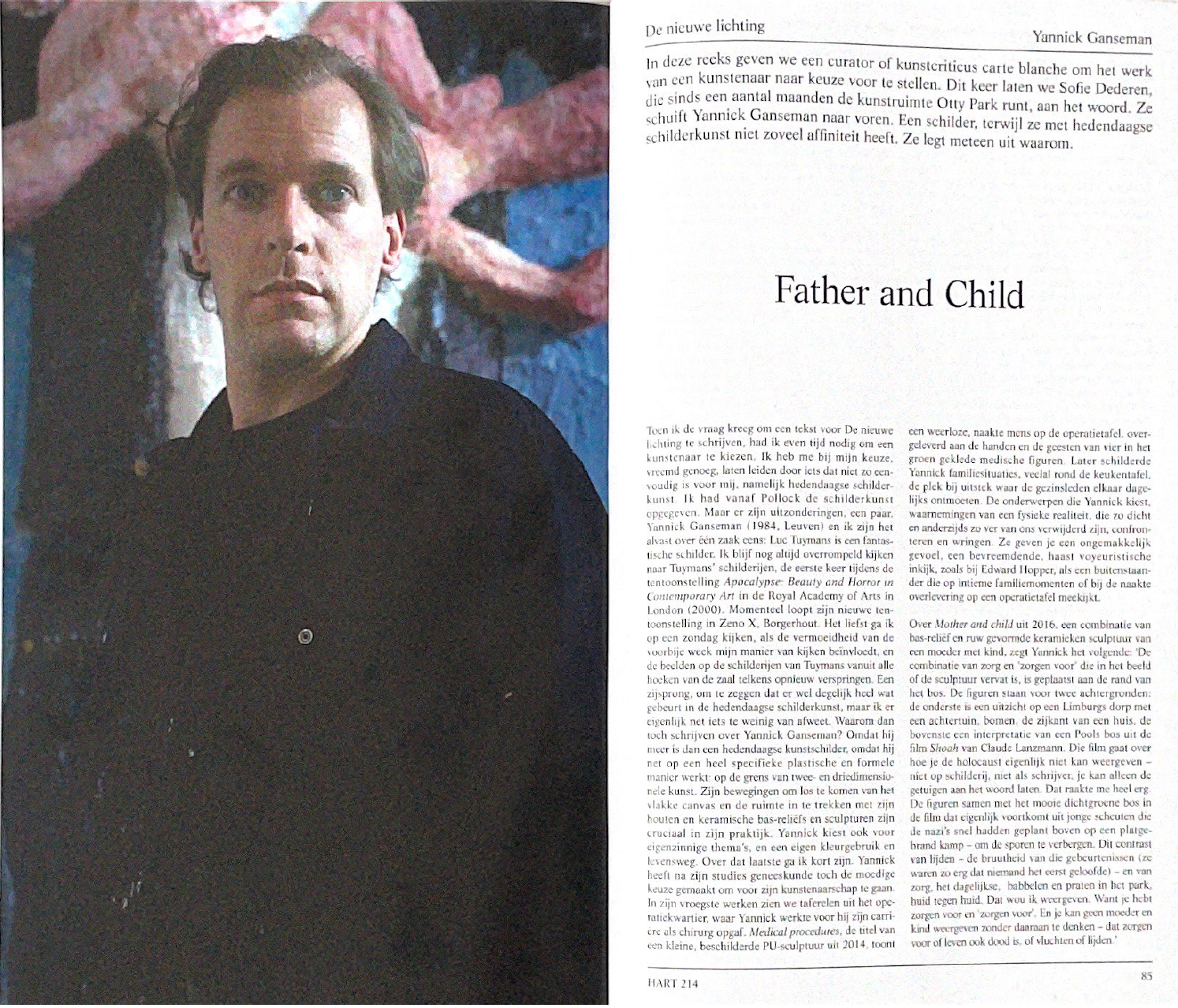Filosofie-Tijdschrift | Jaargang 32 | nr. 2 | maart/april 2022 p.15 - Ellen Gillard - Hommage aan een plaats
Filosofie-Tijdschrift | Jaargang 32 | nr. 2 | maart/april 2022 p.16-17 - Ellen Gillard - Hommage aan een plaats
Filosofie-Tijdschrift | Jaargang 32 | nr. 2 | maart/april 2022 p.18-19 - Ellen Gillard - Hommage aan een plaats
Vanessa Morriset — Zerodeux - Automne 2021
Vanessa Morriset — Zerodeux - Automne 2021
Sofie Dederen — H-ART #214 — De nieuwe lichting — 2021
Sofie Dederen — H-ART #214 — De nieuwe lichting — 2021
Sofie Dederen — H-ART #214 — De nieuwe lichting — 2021
Curatorial text Works Progress Administration Studio — 2021
Jeroen Laureyns — H-ART #203 — Kunst als Catharsis van de corona-quarantaine — 2020
Yannick Ganseman is something of a loner, artistically speaking: his ceramic bas-reliefs and carved wood sculptures seem, in their medium and subject matter (still lives, genre scenes), outside of time, shielded from the contemporary. The more one looks at them, however, the more this impression recedes. What at first seems like an apparent indifference to time turns into a cogent and subtle embrace of the contemporary as a condition of temporal awareness and historical consciousness.
The contemporary is present in Ganseman’s works not through representation (as was Pop Art back in the day) but through a cleavage between the times of history, of making and of visual apprehension. Ganseman’s invocations of the Della Robbia brothers, Vincent van Gogh, Robert Gober and Rembrandt, and his hybridisations of materials (ceramics, wood, plexiglass, and, more recently, etching) are devoid of the irony of certain postmodern gestures, which only reinforced their perishable nature. Rather Ganseman’s objects gum up the act of looking, forcing upon the viewer a diffuse consciousness of time, irreducible to the past. To borrow from the English philosopher Peter Osborne, Ganseman’s carefully crafted and often diminutive surfaces result in a disquieting effect of contemporaneity as a ‘disjunctive conjunction of times’.
Curatorially, Ganseman’s art appears most at home in places that resist mainstream contemporary art’s predilection for the white cube, the fair booth or the post-industrial conversion. My last encounter with his work – in the basement gallery of CC Strombeek, Brussels – was in a maze-like floorplan of side-spaces and columns. In the 2017 edition of ‘Van Stof tot Asse’, Ganseman appropriately occupies an abandoned domestic space: the peeling wallpaper and raw floor boards underscore his work’s attachment to a present inseparable from, indeed informed by history, in the disjunctive plural.
Antony Hudek, 6 July 2017 — Catalogue text ‘Van Stof tot Asse’









